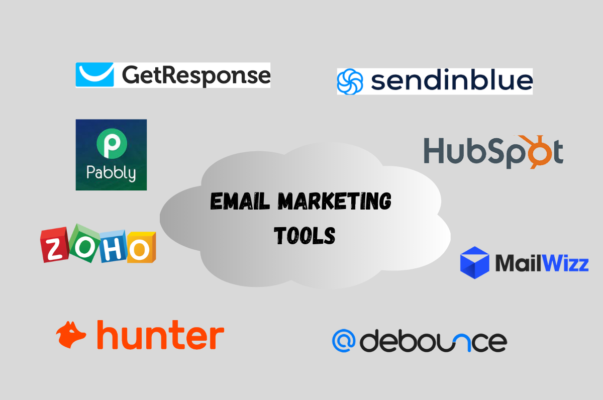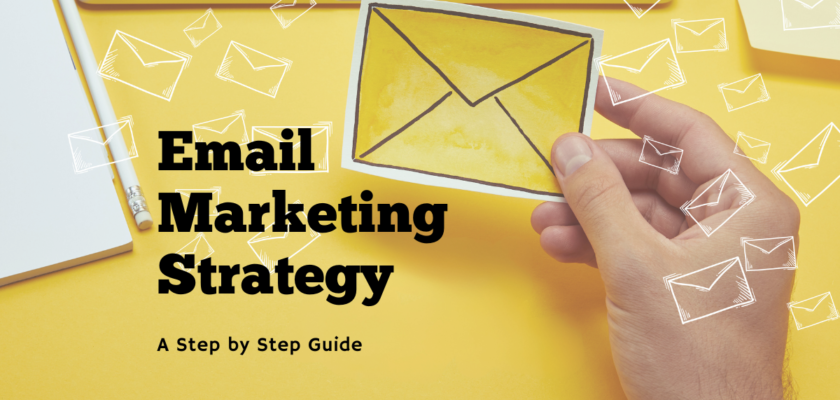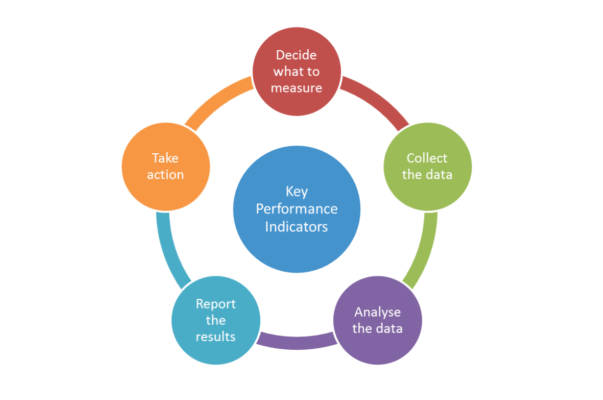Introduction
In today's digital age, email marketing has emerged as a powerful tool for businesses to connect with their audience, drive engagement, and boost conversions.
By crafting a well-thought-out email marketing strategy, you can harness the potential of this platform to achieve your business objectives and establish a strong online presence.
The importance of email marketing
Email marketing serves as a direct line of communication between businesses and their customers.
It allows you to deliver personalized and relevant content directly to your subscribers' inboxes, keeping them informed about your latest offerings, promotions, and industry insights.
With the right strategy in place, email marketing can help increase brand awareness, nurture leads, drive website traffic, and ultimately, boost sales.
Benefits of having a well-crafted email marketing strategy
A well-crafted email marketing strategy offers numerous benefits to businesses of all sizes.
- Firstly, it helps build and maintain strong relationships with your audience by delivering valuable content consistently.
- Secondly, it enables you to segment your target audience, ensuring that each email is tailored to their specific interests and needs.
- Thirdly, it provides measurable results through key performance indicators (KPIs) that can guide you in optimizing your campaigns for better outcomes.
Ultimately, a well-executed email marketing strategy can help you achieve higher engagement rates, increased customer loyalty, and a greater return on investment (ROI).
Crafting a successful email marketing strategy requires careful planning and execution. In this step-by-step guide, we will walk you through the step-by-step process of creating an email marketing strategy that will help you build strong relationships with your subscribers and drive results. Let's dive in!
1-Setting Objectives for Your Email Marketing Strategy
Before diving into the intricacies of crafting an email marketing strategy, it is crucial to define clear objectives that align with your overall business goals.
- Defining goals
Start by identifying what you hope to achieve through your email marketing efforts.
Do you want to increase website traffic, generate leads, promote specific products or services, or improve customer retention?
By clearly defining your goals, you can create targeted email campaigns designed to achieve specific outcomes.
- Identifying target audience
Understanding your target audience is essential for crafting effective and personalized emails. Conduct thorough market research to identify the demographics, interests, and pain points of your ideal customers. By gaining these insights, you can create content that resonates with your audience and drives meaningful engagement.
- Establishing key performance indicators (KPIs)
To measure the success of your email marketing strategy, it's important to establish KPIs that align with your goals.
Common KPIs include open rates, click-through rates, conversion rates, and revenue generated. By regularly tracking these metrics, you can gauge the performance of your campaigns and make data-driven decisions to optimize your results.
Read more: Top Email Marketing KPIs to Measure Success
2-Understanding Your Target Audience
To create impactful email campaigns, it is essential to have a deep understanding of your target audience. By developing customer personas and segmenting your email list, you can deliver relevant content that resonates with each recipient.
- Conducting market research
Market research is a crucial step in understanding your target audience's preferences, pain points, and desires. You can gain valuable insights that inform your email marketing strategy by analyzing industry trends, conducting surveys, and reviewing customer feedback.
- Creating customer personas
Customer personas are detailed representations of your target audience segments. By identifying their motivations, goals, challenges, and preferences, you can tailor your email content to speak directly to each persona's unique needs. These personas serve as a guide for crafting personalized and relevant email campaigns that drive engagement and conversions.
- Segmenting your email list
Segmenting your email list involves categorizing subscribers based on specific criteria, such as demographics, purchase history, or engagement level. This allows you to send highly targeted emails that are more likely to resonate with each segment. By segmenting your list, you can improve open rates, click-through rates, and overall campaign performance.
3-Selecting the Right Email Service Provider (ESP)
Choosing the right Email Service Provider (ESP) is crucial for the success of your email marketing strategy. With numerous options available, it's important to consider key features, pricing, and plans that align with your business needs.
- Researching ESP options
Begin by researching different ESPs to compare their features, reputation, and customer reviews. Look for providers that offer a user-friendly interface, robust automation capabilities, reliable deliverability rates, and excellent customer support.
- Key features to consider in an ESP
When evaluating ESP options, prioritize features that align with your specific business requirements. Look for features such as customizable email templates, segmentation capabilities, A/B testing, analytics, and integration with other marketing tools or CRM systems.
- Comparing pricing and plans
Consider your budget and the scalability of your email marketing efforts when comparing pricing and plans. Evaluate the cost based on the number of subscribers you have, the volume of emails you send, and any additional services or features your business may require. Choose an ESP that offers a flexible pricing structure and caters to your present and future needs.
4-Popular Email Marketing Tools

Here are some important email marketing tools that are helping businesses streamline their communication and engagement with customers.
These tools offer user-friendly interfaces and robust features for designing visually appealing emails, segmenting audiences, and automating campaigns.
These email marketing tools empower businesses to create compelling content, analyze performance metrics, and ensure regulatory compliance, all contributing to successful and targeted email campaigns that foster stronger customer relationships.
Read more: 7 Best Email Marketing Platforms
5-Building an Engaging Email List
An engaged and quality email list is the foundation of any successful email marketing strategy. Focus on optimizing website sign-up forms, promoting email subscriptions through social media, and implementing lead magnet strategies to attract and grow your email list.
- Optimizing website sign-up forms
Make it easy for visitors to subscribe to your email list by optimizing website sign-up forms. Ensure the forms are prominently placed, visually appealing, and provide clear incentives for signing up, such as exclusive content, discounts, or early access to new products.
- Promoting email subscriptions through social media
Leverage the power of social media to promote your email subscriptions. Create compelling social media posts with clear calls-to-action that encourage followers to join your email list. Consider running social media contests or offering exclusive promotions to incentivize sign-ups.
- Implementing lead magnet strategies
Lead magnets are valuable resources or incentives that you offer in exchange for email addresses. These can be in the form of e-books, whitepapers, webinars, or exclusive access to gated content. Implement lead magnet strategies to attract potential subscribers and build your email list with engaged and interested individuals.
Stay tuned for the continuation of this article, which covers crafting compelling email content, designing eye-catching email templates, creating effective email campaigns, and more.
6-Crafting Compelling Email Content
Personalizing email content
Personalization is key when it comes to capturing the attention of your subscribers. By tailoring your email content to their preferences and needs, you can increase engagement and conversion rates. Here are a few tips for personalizing your email content:
- Segment your email list based on demographics, interests, or previous purchase history to send targeted messages that resonate with each group.
- Use dynamic content to include personalized elements such as the subscriber's name, location, or recent interactions with your brand.
- Leverage behavioral data to send automated emails triggered by specific actions, such as abandoned cart reminders or personalized product recommendations.
Writing attention-grabbing subject lines
The subject line of your email is the first thing that subscribers see in their inbox, and it plays a crucial role in determining whether or not they open your email. To create attention-grabbing subject lines:
- Keep it short and concise, ideally under 60 characters, to ensure it is fully displayed on mobile devices.
- Use action-oriented language and strong verbs to create a sense of urgency or excitement.
- Personalize the subject line by including the recipient's name or referencing their recent activity with your brand.
- Experiment with different subject line strategies, such as posing a question, using emojis, or offering a sneak peek of the email content.
Utilizing persuasive copywriting techniques
To compel your subscribers to take action, your email copy should be persuasive, engaging, and conversational. Here are some key copywriting techniques to consider:
- Hook your readers from the start with a captivating opening sentence that grabs their attention and entices them to read further.
- Use storytelling to create an emotional connection with your audience and make your message more relatable.
- Focus on benefits rather than features, emphasizing how your product or service solves a problem or fulfills a need.
- Include a clear call-to-action (CTA) that clearly tells your subscribers what you want them to do next, such as “Shop now,” “Learn more,” or “Claim your exclusive offer.”
7-Designing Eye-Catching Email Templates
Choosing a responsive email template
When designing your email templates, it's crucial to ensure they are responsive and optimized for different devices. Consider the following tips:
- Select a responsive email template that automatically adjusts to the screen size of the recipient's device, ensuring a seamless user experience.
- Keep your design clean and uncluttered, with plenty of whitespace to enhance readability.
- Test your email template across various email clients and devices to ensure it displays correctly and consistently.
Incorporating brand elements and visuals
Consistency is key when it comes to branding. Incorporating your brand elements and visuals into your email templates helps establish recognition and reinforce your brand identity. Here's how:
- Use your brand's color palette for fonts, buttons, and other design elements to create a cohesive look.
- Include your logo and brand name prominently to reinforce brand recognition.
- Incorporate relevant images or graphics that align with your messaging and enhance the visual appeal of your emails.
Optimizing for mobile devices
With the increasing popularity of mobile devices, it's crucial to optimize your email templates for mobile viewing. Consider the following tips:
- Keep your email width between 600-800 pixels to ensure it fits well on mobile screens.
- Use large, easy-to-read fonts and buttons that are finger-friendly for mobile users.
- Optimize image sizes for quick loading times on mobile networks.
8-Creating Effective Email Campaigns
Welcome emails for new subscribers
Welcome emails provide an excellent opportunity to make a positive first impression and introduce your brand to new subscribers. Consider the following tips when creating welcome email campaigns:
- Craft a warm and personalized welcome message that expresses gratitude and sets expectations for future communication.
- Provide a clear and compelling CTA that encourages new subscribers to take action, such as exploring your website or making their first purchase.
- Consider offering an exclusive discount or incentive to new subscribers as a token of appreciation.
Nurturing leads through drip campaigns
Drip campaigns are a series of automated emails sent at predetermined intervals to nurture leads and guide them through the customer journey. Here's how to create effective drip campaigns:
- Create a series of emails that provide value to your subscribers and help them solve their pain points.
- Gradually introduce them to your products or services, showcasing features and benefits.
- Incorporate personalization and behavioral triggers to deliver targeted content based on their interactions with your previous emails or website.
Promotional emails and special offers
Promotional emails are an essential component of any email marketing strategy, helping you drive sales and conversions. Consider the following tips when crafting promotional emails:
- Clearly communicate the value of your offer and highlight any unique selling propositions (USPs) that set it apart.
- Create a sense of urgency by setting a deadline or limiting the availability of the offer.
- Experiment with different types of offers, such as discounts, free shipping, or exclusive access to new products.
9-Automating Email Workflows
Understanding the benefits of marketing automation
Marketing automation streamlines your email marketing efforts and helps you deliver relevant and timely messages to your subscribers. Here are a few benefits of implementing marketing automation:
- Saves time by automating repetitive tasks, such as sending welcome emails or abandoned cart reminders.
- Improves personalization by delivering targeted content based on subscriber behavior or preferences.
- Increases efficiency by allowing you to schedule and automate email campaigns in advance.
Implementing triggered email automation
Triggered email automation involves sending emails in response to specific actions or events. Here are some triggered email examples to consider:
- Abandoned cart reminders: Send automated emails to remind customers about items they left in their shopping cart and encourage them to complete their purchase.
- Birthday or anniversary emails: Celebrate special occasions by sending personalized emails with exclusive offers or discounts.
- Post-purchase follow-ups: Send a thank-you email or request feedback after a customer makes a purchase.
Setting up automated email sequences
Automated email sequences are a series of emails triggered by specific events. Here's how to set up automated email sequences for different purposes:
- Onboarding sequences: Welcome new subscribers and provide them with valuable information about your brand or product.
- Lead nurturing sequences: Guide leads through different stages of the buyer's journey, delivering relevant content and offers.
- Re-engagement sequences: Re-engage inactive subscribers by reminding them of the value they can receive by staying connected with your brand.
10-Analyzing Email Campaign Performance
Tracking email open rates and click-through rates
Tracking email open rates and click-through rates provides valuable insights into the effectiveness of your campaigns. Here's how to measure these metrics:
- Open rate: Calculate the percentage of recipients who opened your email by dividing the number of unique opens by the total number of delivered emails and multiplying by 100.
- Click-through rate (CTR): Measure the percentage of recipients who clicked on a link in your email by dividing the number of unique clicks by the total number of delivered emails and multiplying by 100.
Monitoring conversion and engagement metrics
Beyond open rates and click-through rates, it's essential to monitor conversion and engagement metrics to assess the overall success of your email campaigns. Consider tracking the following metrics:
- Conversion rate: Measure the percentage of recipients who complete a desired action, such as making a purchase or filling out a form.
- Bounce rate: Monitor the percentage of emails that were not successfully delivered to recipients' inboxes.
- Unsubscribe rate: Keep an eye on the percentage of subscribers who opt out of receiving future emails.
Using A/B testing to optimize campaigns
A/B testing, also known as split testing, allows you to test different elements of your email campaigns to identify the most effective variations. Consider the following A/B testing ideas:
- Subject lines: Test different subject lines to see which ones generate higher open rates.
- Call-to-action (CTA): Experiment with different CTAs to determine which ones drive more clicks and conversions.
- Content layout: Test different email templates or layouts to find the most visually appealing and engaging design.
11-Ensuring Email Deliverability and Compliance
Understanding email deliverability factors
Email deliverability refers to the ability of your emails to land in your subscribers' inboxes. To improve deliverability, consider these factors:
- Sender reputation: Maintain a positive sender reputation by consistently sending relevant and engaging content, without engaging in spamming practices.
- Authentication: Implement protocols such as Sender Policy Framework (SPF), DomainKeys Identified Mail (DKIM), and Domain-based Message Authentication, Reporting & Conformance (DMARC) to verify your email's authenticity.
- Spam filters: Avoid triggering spam filters by using proper formatting, avoiding excessive capitalization or special characters, and avoiding spammy language or excessive use of promotional terms.
Avoiding spam filters and blacklists
To ensure your emails avoid spam filters and blacklists, consider the following best practices:
- Use a reputable email service provider (ESP) that actively monitors and maintains their infrastructure's reputation.
- Avoid purchasing email lists or sending unsolicited emails, as this can result in spam complaints and damage your reputation.
- Regularly monitor your bounce and complaint rates, and promptly remove bounced email addresses and unsubscribe requests from your list.
Following email marketing regulations
It's essential to comply with email marketing regulations to protect both your brand and your subscribers. Consider the following regulations:
- General Data Protection Regulation (GDPR): If you have subscribers in the European Union, ensure you have proper consent for collecting and processing their personal data.
- CAN-SPAM Act: If you send commercial emails from the United States, comply with requirements such as including a valid physical address and providing an easy way for recipients to unsubscribe.
- CASL: If you send marketing emails to recipients in Canada, ensure you have obtained proper consent and include identification information in your emails.
12-Building Relationships Through Email Marketing
Personalizing communication with subscribers
Building strong relationships with your subscribers requires personalized and meaningful communication. Consider the following strategies:
- Use personalized email greetings and include relevant content that aligns with their interests or purchase history.
- Send targeted emails based on specific customer segments or behaviors to ensure you are delivering relevant and valuable information.
- Encourage two-way communication by inviting subscribers to reply to your emails, ask questions, or provide feedback.
Encouraging feedback and engagement
Engagement is key to building a loyal and active subscriber base. Encourage feedback and interaction through the following methods:
- Include social media buttons or links in your emails to make it easy for subscribers to share your content or engage with your brand on social platforms.
- Ask for feedback or opinions through surveys, polls, or ratings to gain insights into your subscribers' preferences and improve your offerings.
- Prompt subscribers to join your online community, such as a private Facebook group, where they can connect with like-minded individuals and further engage with your brand.
Retention strategies for long-term relationships
Retaining subscribers is as crucial as acquiring new ones. Implement these strategies to build long-term relationships with your subscribers:
- Offer exclusive content or promotions to your most loyal subscribers, demonstrating your appreciation for their ongoing support.
- Provide ongoing value by delivering educational content, industry insights, or insider tips that help your subscribers achieve their goals or solve their problems.
- Regularly evaluate and optimize your email content and strategy based on subscriber feedback and performance metrics to ensure you are delivering the most relevant and engaging emails.
13-Integrating Email Marketing with Other Channels
Incorporating social media and email synergy
Integrating email marketing with social media can help amplify your reach and engagement. Consider the following synergistic tactics:
- Promote your social media channels in your emails by including social media buttons or direct links to encourage subscribers to follow or engage with you outside of the email.
- Share email-exclusive content or offers on your social media platforms to incentivize your social media followers to subscribe to your emails.
- Use social listening tools to identify conversations or topics on social media that align with your email content, allowing you to join the discussion and attract new subscribers.
Coordinating email marketing with content strategy
Email marketing and content marketing go hand in hand. Align your email marketing strategy with your overall content strategy using these techniques:
- Repurpose your best-performing blog posts or content assets into email newsletters or exclusive subscriber-only content.
- Create an editorial calendar to map out how your email content will align with your upcoming blog posts, whitepapers, or other content releases.
- Use email teasers or snippets to drive traffic to your blog or other content assets, encouraging subscribers to engage with your brand beyond their inbox.
Leveraging email in multichannel campaigns
Combine email marketing with other marketing channels to create cohesive multichannel campaigns. Consider the following examples:
- Send personalized follow-up emails to customers who interacted with your brand through a different channel, such as attending a webinar or participating in a contest.
- Coordinate email campaigns with your digital advertising efforts, using retargeting ads to reinforce your message and increase brand recall.
- Use email to drive traffic to your offline events, such as trade shows or in-store promotions, by sending event-specific invitations or exclusive offers.
Conclusion
Crafting an effective email marketing strategy requires careful consideration and implementation of various key components. In this step-by-step guide, we covered the importance of crafting compelling email content, designing eye-catching templates, creating effective email campaigns, automating workflows, analyzing campaign performance, ensuring email deliverability and compliance, building relationships, integrating email marketing with other channels, and scaling and expanding your efforts. By following these steps and continuously optimizing your strategy, you'll be well on your way to achieving email marketing success!






